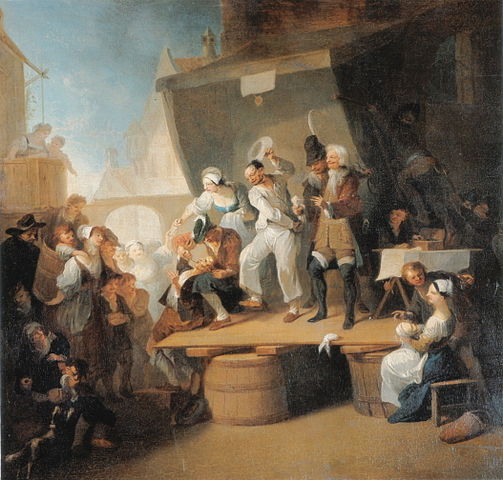The truth about King Richard III and Medieval Dentistry
We have been on a Medieval mission at Smile Essential Dental Practice, with all the hype and excitement about the reinterment of King Richard III we wanted to give him a good check up and sink our teeth into the weird world of Medieval dentistry.
The journey was intriguing, often tricky, exciting and very insightful. We’ve been in touch with with the University of Leicester archaeologists, osteologists, read news articles, watched the videos and read numerous publications, researched historical dental records and publications.
Our team member Gemma has been on the King Richard III trail to see just what we could uncover about our local legend.
So what secrets are locked away in King Richard III’s teeth?
Shakespeare portrayed King Richard III in his 1591 play as an anxiety ridden English monarch and various publications have stated that the king ground his teeth together a condition known as Bruxism. It’s claimed it was from the stress caused by the guilt after murdering the Princes in the Tower to become the King of England.
The Truth
 In an article for the British Dental Journal Dr Amit Rai analysed the kings dentition and concluded it does indeed show signs of tooth wear that would support grinding.
In an article for the British Dental Journal Dr Amit Rai analysed the kings dentition and concluded it does indeed show signs of tooth wear that would support grinding.
However to get a clear diagnosis you have to look at the whole picture. It is thought that because of his medieval diet and the extent of wear not being too severe on the king’s teeth, the cause is more likely to be dietary abrasion and erosion; not the guilt of murdering his two nephews!
The University of Leicester recorded that there were cellular changes in the king’s teeth over the last few years of his life which is normally associated with a change in water supply from the local area. However it is known that the king didn’t move and the changes were more likely due to his new richer diet of fish and his increasing wine consumption.
Water of that time was often unsafe to drink, so it was expected that people would drink the much safer alcoholic beverages!
Wine was a lot more acidic in those days which could increase the likelihood of abrasion. Mead, a wine made from honey, was also popular during that time which could also help to explain some of the dental decay King Richard III suffered from.
Crazy but kinda possible folktales
Scholar John Rous a Medieval historian initially praised the king for being a good lord and not taxing the common people. However he quickly changed his views following the reign of the kings new successor, portraying the king as a freakish individual who was not only carried in his mother’s womb for 2 years but was also born with a full set of teeth and that he had also poisoned his own wife! Rous’s historical works have been noted that they display no critical faculty and arising in a somewhat credulous manner.
Now we know that it is extremely unlikely that his mother was pregnant for a whole 2 years, it is however a possibility that he may have been born with a full set of teeth- though it’s quite a rare occurrence only happening in about 1 of every 2,500 people.
Medieval Dentistry is not what you think!
Dental health is perhaps not the first thing you think of when you think of people living in Medieval times. However it was surprisingly sophisticated and there is a great deal of evidence to support that Medieval people did make an effort and care about their teeth and gums.
Dentistry was carried out by barbers in those days and they had a range of basic dental instruments and concoctions to treat toothache. They had a good understanding of diagnosing and treating dental problems for the time, though some of their suggestions are a little whacky!
Here’s a few for your entertainment:
- Avoid eating leeks as they’re bad and could cause injury to the teeth.
- Cure tooth worms (tooth worms they believed created bad teeth) by inhaling the smoke of hot henbane seeds.
- After dental treatment it would help to gargle with salt wine or a wine spiced with myrrh and frankincense
- Severe pain would be weakened with opium if you could afford it. If not you would have to resort to prayer!
- Wear the beak of a magpie hung from the neck to cure tooth pain.
Perhaps a visit to see us for toothache next time might seem a little dull!
The good, the bad and the poisonous…
Most people in Medieval times cared about oral hygiene and had a oral hygiene routine which was centred on using liquids such as vinegar and other caustic substances, scrubbing the teeth using a cloth (no toothbrushes back then!) with a mixture of herbs and abrasive substances which rubbed bacteria off the teeth.
Contrary to popular belief, Medieval people could be meticulous about personal hygiene and they were constantly looking for new ways to make themselves look better and smell sweeter. Medieval fold would use things like mint, musk and bay leaves to freshen their mouths and prevent bad breath.
Taking a tooth out was seen as a last resort in Medieval times. Generally Medieval barbers would try herbal remedies, vinegar and wine rinses, charms, amulets and tooth fillings.
Though the filling material could be poisonous!
An example of a Medieval filling recipe:
- pig grease
- gall nuts
- mastic
- myrrh
- sulphur
- beeswax
- arsenic
In some cases, inability to afford medical treatment, or a doctor’s lack of success, led the sick to fall back on prayer and pilgrimage as the only hope of a cure.
There is written documentation proving that people used fine sticks to remove food deposits, much like we use toothpicks today. In fact Dr Amit Rai noted in his publication that there was less plaque build up on certain teeth compared to others indicating that King Richard III himself had some sort of dental routine. It’s also evident that he experienced at some point dental treatment as it’s apparent that he had 2 teeth extracted by skilled hands.
Medieval Cosmetic Dentistry
Is it possible that King Richard III partook in some cosmetic dentistry procedures? His front top left tooth is missing. There were options available to make a denture from either human teeth or cow bones! However this is just speculation as far as our research goes we haven’t found out any evidence as yet, but our quest continues…
Conclusion
We don’t know if King Richard III was guilty of the murder of his close family members or indeed if he was born with a full set of teeth! However we are certain of his reform of the judicial system and its changes that are still in place today. In the words of King Richard III “innocent until proven guilty”.
It’s been interesting for us to look back at such a local Leicestershire legend especially to us and our patients that live here. Catching a glimpse of Medieval life through dentistry has been an fascinating journey that Gemma and all at Smile Essential Dental Practice have enjoyed and we hope you have too!
Gemma and the Smile Essential team
Sources and thanks-
Dr Amit Rai- Richard III- the final act, BDJ, Nature.com- dental treatment in medieval england, Daily Digest, BACDT directory, Wikipedia King Richard 3rd, Wikipedia Barber-Surgeon, wineintro, University of Leicester for answering our emails and Smile Essential Dental team for discussion, advice and guidance.





